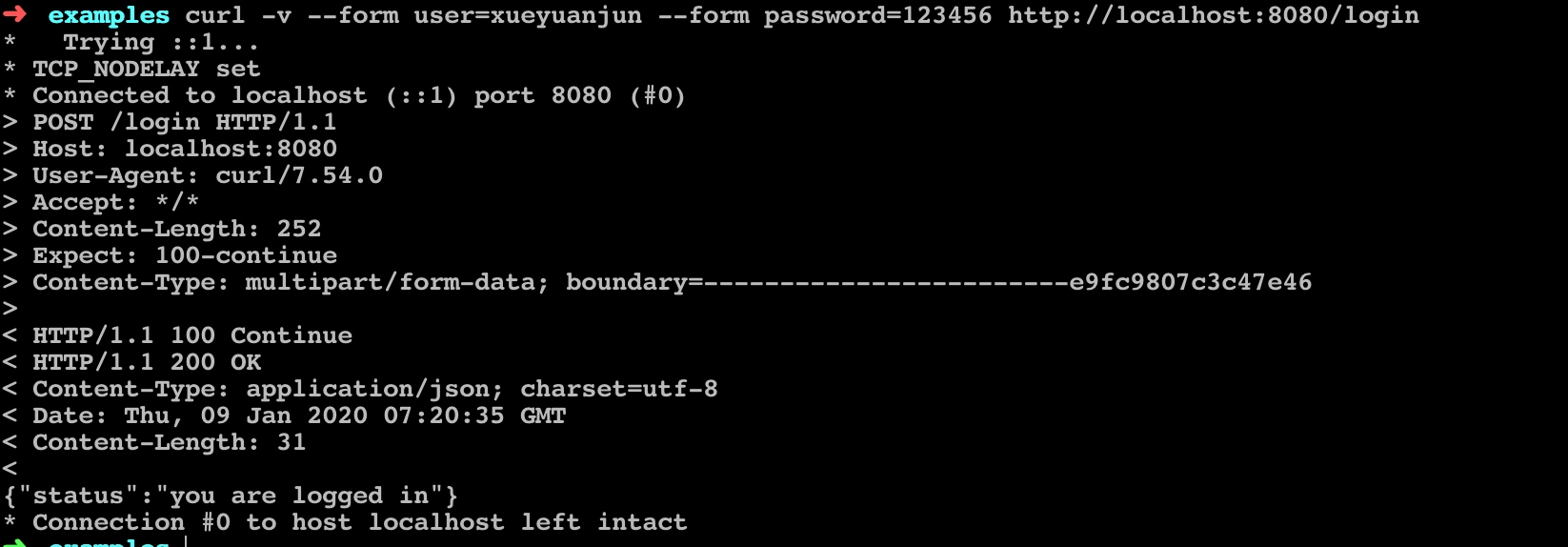Gin 使用示例(二十二):Multipart/Urlencoded 绑定和数据解析
我们可以像下面这样将表单请求数据绑定到指定结构体(默认通过 Multipart/Urlencoded 进行绑定):
package main
import (
"github.com/gin-gonic/gin"
)
type LoginForm struct {
User string `form:"user" binding:"required"`
Password string `form:"password" binding:"required"`
}
func main() {
router := gin.Default()
router.POST("/login", func(c *gin.Context) {
// you can bind multipart form with explicit binding declaration:
// c.ShouldBindWith(&form, binding.Form)
// or you can simply use autobinding with ShouldBind method:
var form LoginForm
// in this case proper binding will be automatically selected
if c.ShouldBind(&form) == nil {
if form.User == "xueyuanjun" && form.Password == "123456" {
c.JSON(200, gin.H{"status": "you are logged in"})
} else {
c.JSON(401, gin.H{"status": "unauthorized"})
}
}
})
router.Run(":8080")
}
启动服务器,在终端窗口通过 curl 发起请求:

此外还可以上下文对象 gin.Context 中直接解析表单请求数据:
func main() {
router := gin.Default()
router.POST("/form_post", func(c *gin.Context) {
// 解析表单字段 message
message := c.PostForm("message")
// 解析表单字段 nick,如果为空的话使用默认值 xueyuanjun
nick := c.DefaultPostForm("nick", "xueyuanjun")
c.JSON(200, gin.H{
"status": "posted",
"message": message,
"nick": nick,
})
})
router.Run(":8080")
}

No Comments